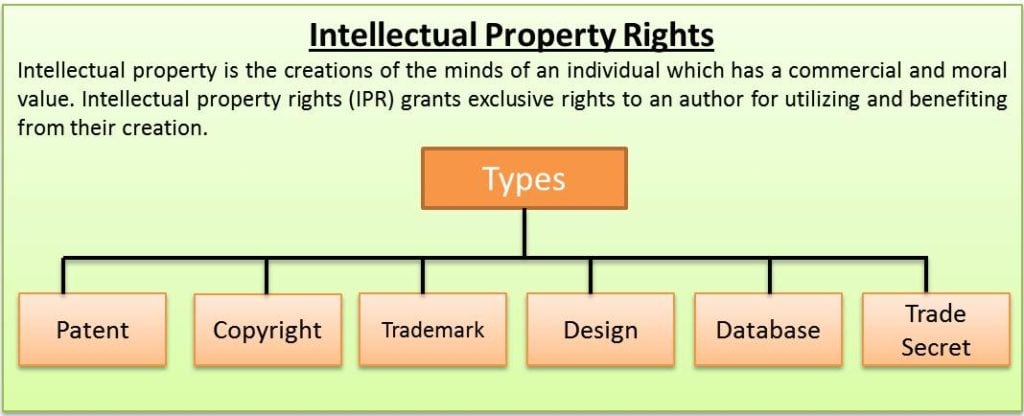THE DRAFT PATENTS (AMENDMENTS) RULES, 2023

Intellectual Property Rights (IPR) refer to a set of legal rights that are granted to individuals or entities for their creations or inventions of the mind. These rights are intended to protect the intellectual property of creators and innovators, providing them with exclusive rights to use, control, and benefit from their creations for a specified period. IPR is a fundamental concept in law and business, and it encompasses various forms of intellectual property, including:
-
Copyright: Copyright is a form of IPR that protects original literary, artistic, and creative works such as books, music, films, software, and visual art. It grants the creator the exclusive right to reproduce, distribute, display, and perform their work for a certain period, typically the creator's lifetime plus 50 to 70 years.
-
Patents: Patents are granted to inventors for new and useful inventions or processes. They provide exclusive rights to make, use, and sell the invention for a specified period, usually 20 years from the date of filing.
-
Trademarks: Trademarks protect distinctive signs, symbols, names, and logos used to identify goods and services. They help consumers distinguish products or services from those of competitors. Trademark protection can be renewed indefinitely as long as the mark remains in use and distinctive.
-
Trade Secrets: Trade secrets encompass confidential and proprietary information, such as manufacturing processes, formulas, and customer lists, that provide a competitive advantage. Unlike patents, trade secrets have no set duration and remain protected as long as they are kept confidential.
- Industrial Designs: Industrial designs protect the visual design or aesthetic aspects of a product, such as its shape, color, or ornamentation. They provide exclusive rights to use the design for a specified period.
- Database Rights: Some jurisdictions provide protection for databases containing significant investment in data collection and organization. This protection prevents unauthorized extraction or reutilization of the database content.
In India, like in many other countries, patents are granted based on specific criteria and requirements that an invention must meet. The criteria for issuing patents in India are outlined in the Indian Patents Act, 1970. To be eligible for a patent in India, an invention must satisfy the following criteria:
-
Novelty: The invention must be new and not previously disclosed or published anywhere in the world before the date of filing the patent application. This means that the invention should not have been part of the public domain or publicly known.
-
Inventive Step (Non-Obviousness): The invention must involve an inventive step or a non-obvious improvement over existing knowledge or technology. In other words, it should not be an obvious development of existing knowledge or technology for a person skilled in the relevant field.
-
Non-Patentable Subject Matter: The Patents Act also specifies several types of inventions and subject matter that are not eligible for patent protection, including:
- Inventions that are contrary to public order or morality.
- Inventions that could harm human, animal, or plant life or the environment.
- Methods of agriculture or horticulture.
- Methods of performing mental acts or playing games.
- Computer programs as such (though they may be patentable if they have a technical application).
- Once a pre-grant opposition is filed, the Controller shall first decide the maintainability of representation filed and thereafter issue a notice to the Applicant
- The timeline for the Opposition Board to conduct examination of notice of opposition and submit a report is 2 months from the date on which documents were received [currently, 3 months]
- The draft Rules propose that the Annual Working Report (AWR) is to be filed in respect of every period of three financial years starting from the financial year commencing immediately after the financial year in which the patent was granted [currently this is to be filed for every financial year].
- The draft amendments propose to reduce the time period for requesting examination of a patent application from 48 months to 31 months. This is expected to expedite the patent examination process.
- The draft amendments propose to remove the requirement for patent holders to disclose the manufacturing location and price of their patented products. This is expected to reduce the burden on patent holders and to promote innovation.
|
Previous Year Questions
1. How is the Government of India protecting traditional knowledge of medicine from patenting by pharmaceutical companies? (UPSC 2019) 2. In a globalised world, intellectual property rights assume significance and are a source of litigation. Broadly distinguish between the terms – copyrights, patents and trade secrets. (UPSC 2014) |



